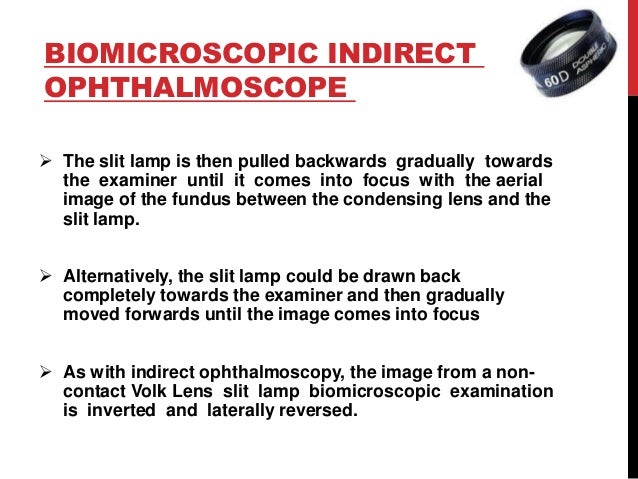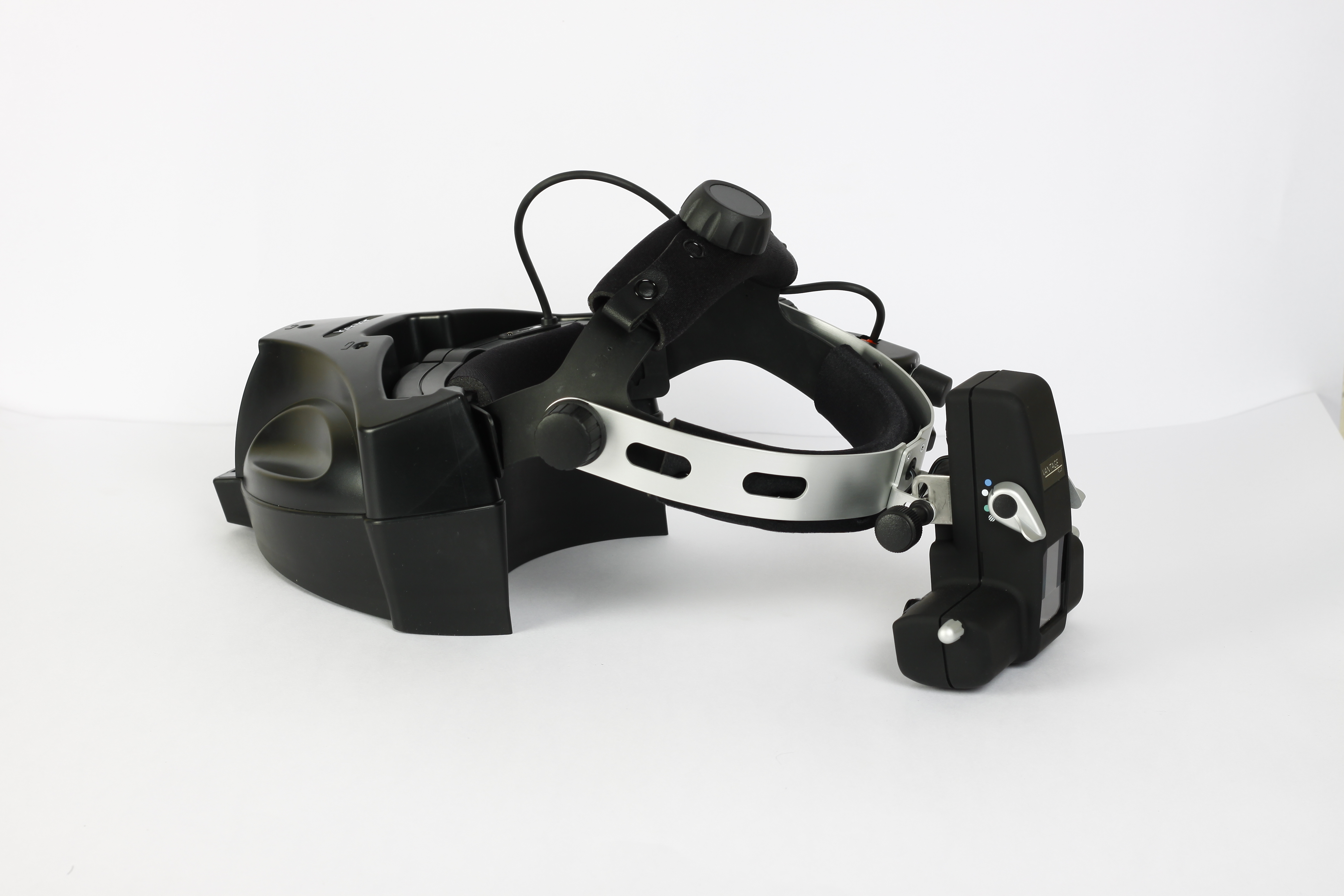

Especially when you are learning the technique, examination is much easier on a dilated pupil. Secondly, optometrists should be aware of dilation. Firstly, it provides low levels of magnification, and high levels of illumination. Of course, with every piece of equipment there are disadvantages to consider. Higher powered lenses are also advantageous for those with smaller pupils. They have to be held closer to the patient’s eye and are smaller in diameter, so might also be preferred by practitioners with smaller hands. It is important to note that the higher-powered lenses offer less magnification, but a greater FoV.
Binocular indirect ophthalmoscope full#
Therefore, this lens could be preferred if you were prioritising a full retinal examination. While a 20D lens is a standard lens for general examination, allowing x3 magnification and a FoV of approximately 45 degrees, a 30D lens offers x2 magnification, but a larger FoV of approximately 65 degrees. For example, the practitioner can control what they are prioritising by changing the power of the condensing lens. This is great for screening as you can see gross abnormalities in a glance as you can see the optic nerve and macular in the same view.įurthermore, it allows the optometrist to prioritise the magnification or field of view (FoV). Using a 20D lens, for example, the practitioner can achieve a view equivalent to approximately eight disc diameters. I have also found patients to be less intimidated by this. It has a longer working distance that allows the examiner to be at arm’s length from the patient, which is more appropriate for testing than other techniques during the pandemic.
Binocular indirect ophthalmoscope portable#
It is portable and could also be great for those carrying out domiciliary work. It is suitable for all patients: children, newborns, adults, those who are wheelchair users and those with learning difficulties. It provides a clear image and is quick to perform, once you learn the technique, and it is great for those patients who have ‘ants in their pants’ and don’t have steady fixation. There are many benefits of the bio headset for an optometrist in day-to-day testing. Like anything, with practice and patience, I have become a big advocate of the bio headset I also feel it has been a very reliable piece of equipment while working throughout the COVID-19 pandemic as it gives a good fundus view from arm’s reach. However, like anything, with practice and patience, I have become a big advocate of the bio headset. I remember picking up the bio headset at university for the first time and thinking ‘Good job I’ll never need this in practice.’ I thought it was mainly used by ophthalmologists and I was certainly not in a rush to pick it up when I started in the hospital clinic. While both are excellent pieces of equipment, they do depend upon your patients’ cooperation.Īs a hospital optometrist I carry out a lot of fundus examinations on both children and those with learning difficulties, which is why I absolutely could not live without my binocular indirect ophthalmoscope. There is a built in full time IR and UV barrier which guarantees improved patient protection and safety.Fundus examinations have always been a key role for optometrists, and I’m sure most will use either a direct ophthalmoscope or a Volk lens to carry out fundus examination. The All Pupil II has a unique single control to change aperture size and position in one movement to view through all pupil sizes. All of our wireless systems come complete with (2) two batteries and charging system. The lightest and smallest wireless battery for ultimate comfort and performance. Keeler is delighted to introduce this great “wow” feature to the market leading Vantage indirect ophthalmoscope. That’s right no more wires and cords! The freedom to move from room to room without any constraints. The new design weighs just 520 grams and extra padded materials have been incorporated into the headband to make this indirect extremely comfortable for all examinations.

Lightweight and comfortable – Go Wireless (Patent Pending) Offers you the choice between a neutral 4,000K LED for longer life, better contrast, and whiter light- or a 3,800K traditional bulb in the same product. Simple controls The All Pupil II has a unique single control to change aperture size and position in one movement to view through all pupil sizes.

Lightweight and comfortable The new design weighs just 520 grams and extra padded materials have been incorporated into the headband to make this indirect extremely comfortable for all examinations. With 2000 lux of light, which can be turned down to 2% of total illumination when necessary, All Pupil II offers maximum illumination with total control.

Outstanding brightness for difficult exams.


 0 kommentar(er)
0 kommentar(er)
